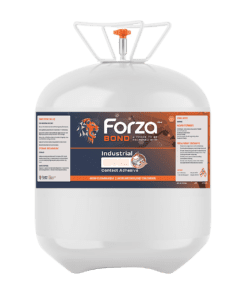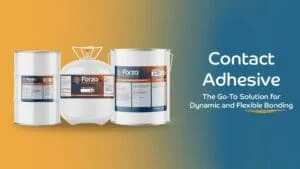What tackifier are you using for infusion molding?
What impact does it have on the environment, your employees, and your manufacturing process?
These are questions you should consider when choosing the best products for your infusion molding process. It’s important for you to understand if your tackifier is resin compatible, if it has sufficient tack so that the matting won’t shift, and if it’s safe and easy for your employees to use.
Tackifiers are designed to adhere to and hold reinforcing fiberglass materials in place before and during the infusion process. As well as fiberglass, they adhere to gel coats, barrier coats, carbon fiber, rolled goods and coring products. A wide variety of tackifiers are used for infusion molding across the composites industry. Most often, a pressure sensitive adhesive, or some form of a contact adhesive, is used. These types of tackifiers are usually sprayed out of aerosol cans, and there are concerns of waste and overapplication from using these tackifiers. They can contaminate the infusion process, causing structural weakness in the finished parts. These tackifiers are also a major health and environmental concern.
So, is there a better tackifier for infusion molding?
Absolutely! In fact, there are a few different types of high strength tackifiers that have been designed to dissolve during the infusion molding process to chemically bond with polyester, vinyl ester and styrene resins. Although these tackifiers typically have had higher VOC content, low VOC and even zero-VOC options are becoming more available.
At Forza, we have 3 tackifiers specially designed for infusion molding, all fully resin-compatible: ForzaBond MC739, ForzaBond MC722 and Formobond IT4050.
The ForzaBond products are available in aerosol cans, but pre-pressurized canisters are recommended for larger volumes. Switching to pre-pressurized canisters will reduce the amount of waste generated by aerosol cans, reduce hazards and costs associated with aerosol disposal, and drastically reduce VOCs.
These tackifiers provide a strong, fast tack for holding reinforcing materials in place. They will not interfere with the resin flow, instead dissolving and crosslinking with resins to create an integrated matrix, generating 100% infusion across a part with no wet out. They are more efficient, generate less waste, and have low shrinkage during cure.
ForzaBond IT4050 provides all these same benefits, but in tape form, and is a zero VOC product. Being easy to control, it generates consistency in application, reducing the risk of overapplication, and reducing the worry of employee training and turnover – all while being the safest and easiest tackifier to use!
How do you feel about the tackifier you’re using for infusion molding? Do you want to learn more about the process or the products we’ve covered? Let us know!




